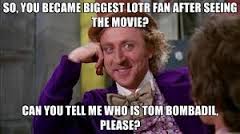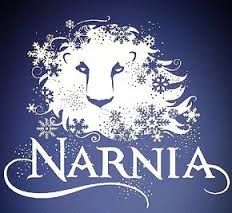![the_hobbit_battle_of_five_armies_poster_header_v2[1]](http://crystalhurd.com/wp-content/uploads/2014/12/the_hobbit_battle_of_five_armies_poster_header_v21-300x122.jpg)
Recently, I was asked by Brenton Dickieson of A Pilgrim in Narnia to participate in The Battle of the Five Blogs. It is not technically a battle per se, merely an exchange of ideas, a dialogue, about Tolkien and the recent release of The Hobbit: The Battle of the Five Armies. There are some other fantastic folks in this with me whose bios, links, and social media handles are listed below:
Brenton Dickieson (@BrentonDana) is a faith, fantasy, and fiction blogger here at www.aPilgrimInNarnia.com. He teaches religious studies at the University of Prince Edward Island and Maritime Christian College, and is working on a PhD in Theology and Literature at the University of Chester.
(here is her review on The Battle of the Five Armies for Christianity Today)
Sørina Higgins (@Oddest_Inkling) is an English teacher, writer, editor, and Inklings scholar. The Oddest Inkling is an exploration of the works of poet Charles Williams (1886-1945). See her work as a whole at www.SorinaHiggins.com.
James Moffett (@TolkienistView) is currently reading for an MA in Professional Writing at Falmouth University. He is interested in all aspects of writing and filmmaking. When not working, he’s either attempting to write poetry and opinion pieces, producing experimental short films, or reading. A Tolkienist’s Perspective is meant to be an online haven for other Tolkien enthusiasts.
Matthew Rettino (@MatthewRettino) studies at McGill University in the English MA program, where he researches contemporary Canadian fantasy, and works on short stories and a historical fantasy novel in his spare time. The Vinciolo Journal includes various book reviews, essays, art, and poetry related to his research and creative endeavours.
Katherine Sas (@Katherine_Sas) graduated from Messiah College in 2009 with a B.A. in English Literature. Kat is a student of all things arts and humanities, in particular Tolkien, the Inklings, and the fantastic and imaginative tradition in storytelling. Raving Sanity is the place for ramblings and musings, be they coherent or otherwise, and especially a venue to connect with others who love to talk about these things.
_____________________________________________________________________________________________
![images[9]](http://crystalhurd.com/wp-content/uploads/2014/12/images9.jpg)
The Battle of the Five [Six] Blogs: All that is Gold Does Not Glitter
If Middle Earth were a real place, I would certainly sell my house, quit my job, and move there. I don’t know what employment I would find, other than a turnip farmer, but at least I could spend my days pulling turnips from the Earth surrounded by the rich beauty of Tolkien’s world.
Of course, that is all rot. There is no such place, except in the fertile soils of my imagination and the pages of books. And everyone knows that growing turnips is not a lucrative career. So I must default to my job of teaching for now. Because we all know that financial security is necessary. How can you even own the books without some form of currency? There must be something of value to exchange. Bartering is rare these days, and unless stray hair or pocket lint is acceptable, I must labor for a paycheck.
Perhaps that is why Jackson’s latest installment is full of money – both cinematic and budgetary.
Just in case you forgot, Jackson reminds us that one of the prevailing themes of Tolkien’s Legendarium is greed. More specifically, how greed is destructive. Take a peek into Silmarillion, or Lord of the Rings, or The Hobbit. Notice that peril is unavoidable when an individual becomes greedy. Justice is discarded, as is common sense and rationality. It’s in the form of powerful jewels, or rings, or GOLD.
Lots and lots and lots of it.
I mean, more gold coins than I ever saw in my highest score of Super Mario Brothers.
And I’m not just referring to the gold of Erebor. There’s gold from Esgaroth that is lost during the escape. Then there is the brassiere full of gold coins. I was starting to believe that Jackson was insulting my intelligence. Oh, all this is about money? Yes, of course. Tolkien’s readers are usually very clever people. It didn’t take a lake engulfing Thorin for me to figure it out.
And what would Orcs want with that money anyway, other than to locate a decent plastic surgeon and have rhinoplasty done on those horrible, pug-like noses?
It has been reported that Jackson’s budget for this final film was a remarkable $750 million dollars. Certainly he did not skimp on CGI special effects as he did on storyline. For example, take the Dragonball-Z-esque, seizure-inducing flashing that occurs during Galadriel’s battle with the Necromancer. I nearly laughed out loud. The “gold lake” sequence was, I admit, a little cheesy.
Sorina mentions that Jackson left many loose ends in this final film. Despite the exceptional length and grand budget, indeed this is true. There is no closure for the deceased dwarves (yes, even Thorin). Some deaths seem quick and relatively painless, while others (like the final battle with Thorin) tend to take a good ten minutes. It appears that the length of your death is directly correlated to your importance to the storyline. Thorin nearly takes a stroll after being stabbed in the chest, while Fili is blithely dropped off a cliff (and no pretty elf to weep for him). Other characters are simply neglected. Poor Radagast only shows up in the nick of time, then vanishes. Did you see Beorn, the skin-changer which helped the dwarves in an earlier installment? He was leaping from a cliff at one point. That’s the only time I saw him.
And then there’s Tauriel.
Tauriel and Legolas go to Gundabad (a good 30 miles) on a horse to watch some swarming birds as a sign that “war is coming.” Seriously Legolas, you should talk with your Dad more often. The Elves figured the Orcs were going to show up. Anyway, the couple magically returns back to Erebor in time for the battle. Unless they are enthusiastic ornithologists, I don’t see why they made such a tiring journey.
And Tauriel asks, “Is this what love is?” when Kili dies. Hmmm…well, talking about runes and rubbing herbs on a dwarf’s leg isn’t really my definition of love. After this, poor Tauriel is discarded, like Bard, into the cinematic black hole that swallows up other, what Jackson interprets as, “disposable characters.”
Tom Bombadil anyone? Oh wait, he didn’t even make the LOTR films.

As a film, Jackson has done an admirable job ensuring that the film is action-packed. I loved the characters, as I loved them in the book, so the casting was excellent. Jackson knows that climax is important to film, and in this film, the climax lasts about 90 minutes. The film has some of the best special effects that I have seen anywhere. Visually, it is stunning. The whole sequence with Legolas and the crumbling bridges was very interesting; similar to the barrel scene from DoS (although many people thought it was also a little cheesy).
As an adaptation, this particular film is not successful. Too much fighting. When there’s no plot, just put in a swordfight. There is little focus on characters in this film, and significant attention on conflict. Yes, I knew to expect it, given the title, but I walked out feeling that I had been forced to tolerate nearly three hours of a WCW match, but instead of a cage it was a mountain fortress. And there were archers and short soldiers on pigs instead of smack-talking, greasy guys. I felt as if Tolkien’s story is lost in the chaos, and not for the first time.
The Desolation of Smaug also had its moments. I disagreed with the long sequence where Smaug discusses the dangers of greed while squatting on a hill of stolen treasure. Hypocrisy aside, it reminded me of an interview with Oprah. Bilbo seemed to conduct a Freudian analysis of the dragon, who honestly doesn’t need a clinical evaluation to understand why he desires gold AND why he’s going to lay waste to an entire city. He’s a dragon. Beowulf didn’t interrogate the dragon did he? Although, I do love hearing Benedict Cumberbatch’s voice…
If you are a casual fan of the books or exclusively the films, you will enjoy this movie. You may confess to be a die-hard Tolkien fan and still immensely enjoy it. It has the action, the plot, and the memorable characters (thanks Tolkien), but with the glitter of the 21st century screen. But one must remember that many of the changes (including the ridiculous lengthening) made to Tolkien’s text were made because a studio, in an effort to increase revenue, made many unfavorable changes to the storyline we love. I understand that this film is an adaptation, an interpretation of a text. But there must come a point where the name Tolkien is, for lack of a better verb, exploited for profit. I didn’t go into the film with high expectations, but sadly, even those were not satisfied. Perhaps Jackson had a big budget for this film, but its presentation pales in comparison to the original text.
And thus is the true irony: a film which warns its audience about the hazards of greed is ultimately controlled by a corporation guilty of being avaricious.
Despite this, Tolkien’s story still shines. His gift as a writer is continually illustrated. Even when his works experience poor adaptations, he still portrays, with conviction and veracity, the nature of humankind.

![lucy-wardrobe[1]](http://crystalhurd.com/wp-content/uploads/2014/12/lucy-wardrobe1-300x221.jpg)
![the_hobbit_battle_of_five_armies_poster_header_v2[1]](http://crystalhurd.com/wp-content/uploads/2014/12/the_hobbit_battle_of_five_armies_poster_header_v21-300x122.jpg)
![images[9]](http://crystalhurd.com/wp-content/uploads/2014/12/images9.jpg)
